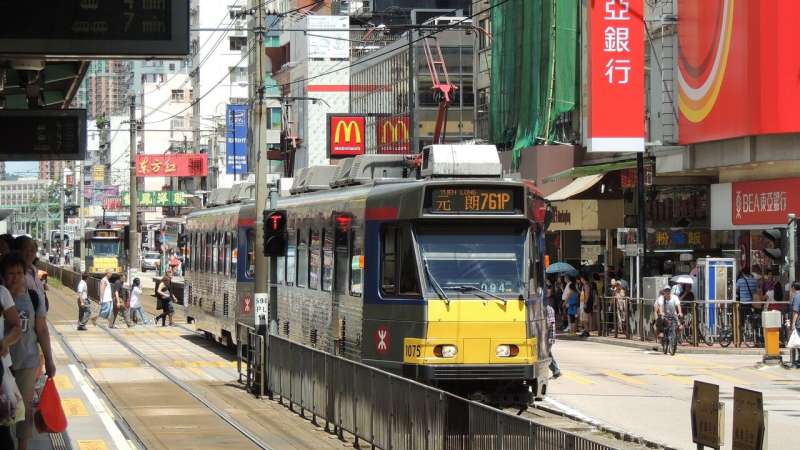This article has been reviewed according to Science X's editorial process and policies. Editors have highlighted the following attributes while ensuring the content's credibility:
fact-checked
trusted source
proofread
Q&A: LRT, REM, mass transit projects and their fuzzy reality

The city of Gatineau is planning a tramway network that will link up with Ottawa, where the Light Rail Transit (LRT) continues to be bogged down by major mishaps. With Montreal's new Réseau express métropolitain (REM) light transit system experiencing its own hiccups to start, how can cities looking to incorporate mass transport systems successfully launch such endeavors while avoiding project failures and years of misfortune?
New research from a University of Ottawa professor suggests project leaders not overlook the "F" word.
Telfer School of Management professor Lavagnon Ika found a lack of full appreciation of the context surrounding the delivery of large-scale public mass transit projects is detrimental to their performance. In particular, the elusive or changing nature of these projects' goals, their shifting scope, and the conflicting expectations of their stakeholders lead to the biggest problems. Managing this fuzziness rather than delivering within budget is the most important role of project managers.
"There is a solution to time overruns, cost blowouts, business case failures, and users' dismay," says Professor Ika, who looked into transit projects in his study and also recently published a book, titled "Managing Fuzzy Projects in 3D: A Proven, Multi-Faceted Blueprint for Overseeing Complex Projects," on the topic based on his research on 3,000 projects. The study is published in the journal IEEE Transactions on Engineering Management.
"Managing fuzziness requires a shift from a narrow focus on time, cost, and scope to a comprehensive approach that considers the rational, psychosocial, and political dimensions of projects."
Professor Ika, Founding Director of the Observatory of Major Projects at Telfer, provides insight into this research, which considers the rational, political and dimensions that would benefit the next stages of the Ottawa LRT, the upcoming Gatineau Tramway, and the Montreal REM.
What is the common theme to understanding why these mass public transport projects succumb to complications?
Managers often approach these projects in a standard way, focusing on being on time and on budget while ignoring their sociopolitical dimensions and societal impacts. Soon enough they realize the politics surrounding the project will trump their plans, even if the delivery of benefits for users and society is what matters most.
With the LRT, then Ottawa Mayor Watson pegged its budget to a number—$2.1 billion—before planning and design were completed. Prematurely announcing an optimistic budget publicly was a political move that led to poor decisions, like excluding platform doors from the design, which later backfired in that passengers interfered with the doors, thereby jamming the platforms, and causing major delays in their commute, as revealed in the inquiry report. Planners and managers also tend to overlook stakeholder expectations and political repercussions in and around the core project team, only to realize that politics ultimately trumps the plans.
You mention expectations around the 'F word'; why is fuzziness so pertinent?
The degree of fuzziness is at its highest when multiple principals with differing agendas and several agents with conflicting expectations are involved. They may strongly influence the project's major stages, starting with the mandate's initial formulation, which can significantly evolve over time. This may change unexpectedly following an election, also, which provides a new political dimension.
What kind of solution do you propose?
A holistic approach prioritizes overall effectivity (societal benefits) over effectiveness (for formal clients) and efficiency (resource utilization). It also suggests conducting premortems and engaging a very broad array of stakeholders for better planning and decision-making.
Overall, there is a need for a paradigm shift in transit project management, emphasizing the importance of societal impact, stakeholder engagement, and a comprehensive understanding of the project's context and sociopolitical complexity.
What can these projects ultimately do to be a success?
Drawing from extensive research on "fuzzy projects" which involved evolving goals and diverse stakeholders, early and continuous engagement with transit users is key. Additionally, non-users must be involved as they are overlooked despite being the largest group affected as taxpayers but also because they will benefit from reduced traffic, pollution, and urban revitalization.
There are three practical recommendations for managing the cost performance of projects:
- Benchmarking projects.
- Recalibrating cost estimates at the business case phase.
- Reassessing how contingency is produced and evaluated.
If progress is to be made to improve the cost performance of transport infrastructure projects, then standard definitions and terminologies must be enacted to better understand context and meaning surrounding projects. Then, evidence-based decisions surrounding risk can be enacted.
More information: Peter E. D. Love et al, Large-Scale Transport Infrastructure Project Performance: Generating a Narrative of Context and Meaning, IEEE Transactions on Engineering Management (2021). DOI: 10.1109/TEM.2021.3094511

















